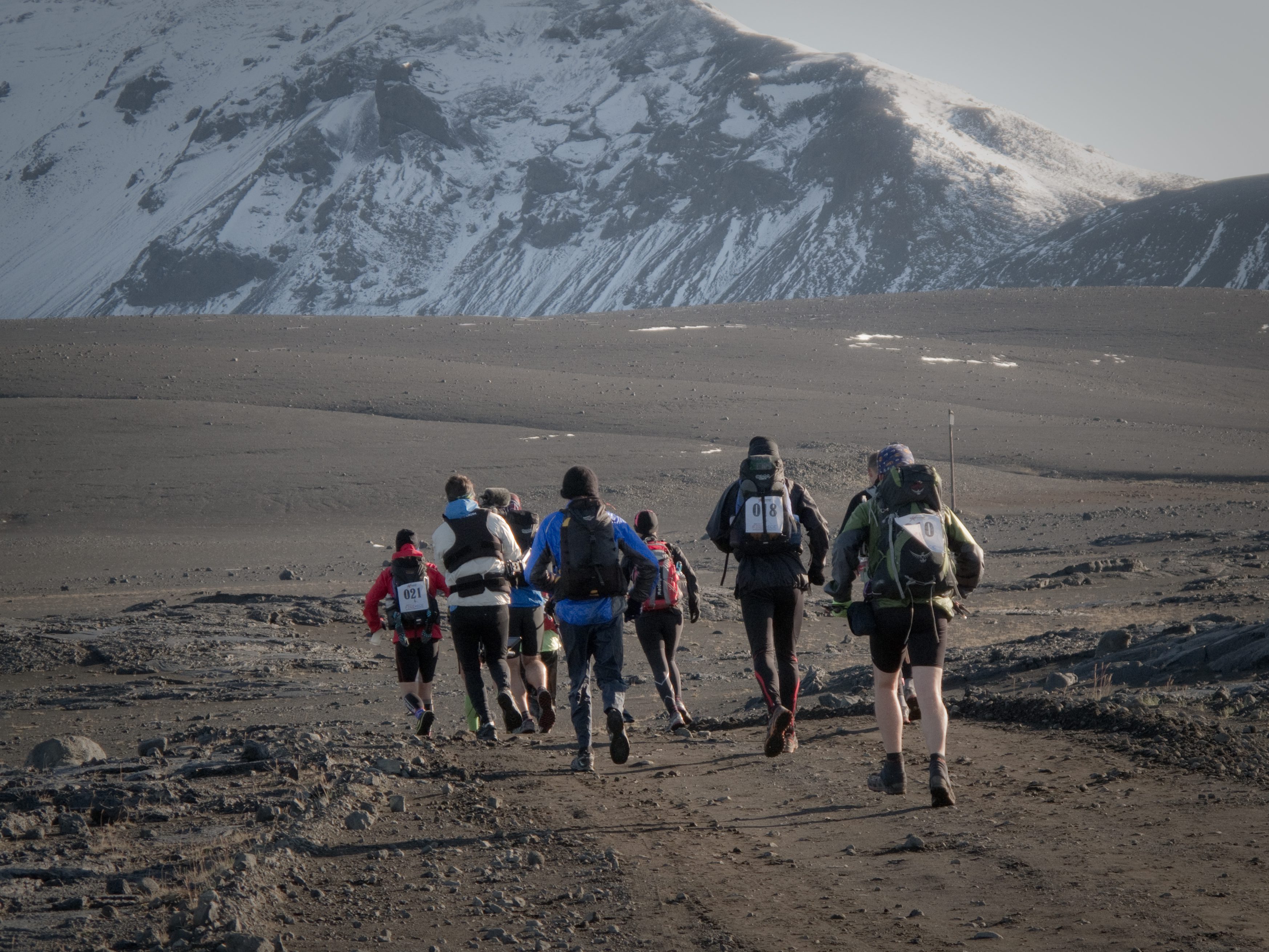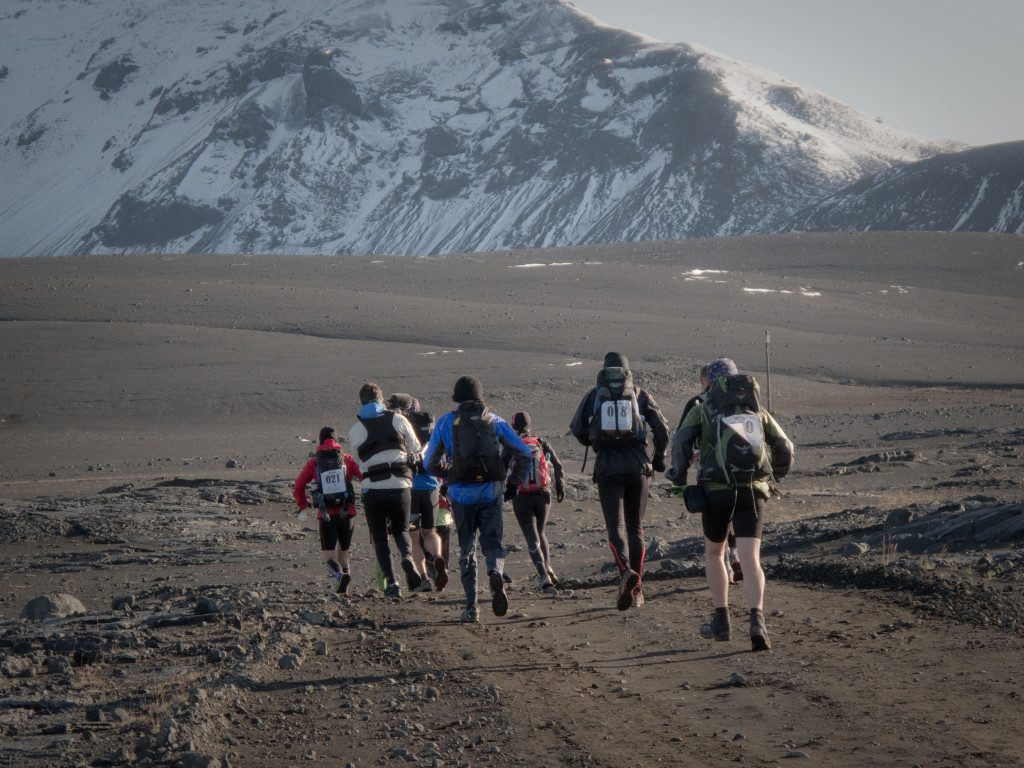Exotic Destination: Fire and Ice

Iceland ultramarathon offers a demanding 250k race past volcanoes and glaciers. It’ll make you feel like you’re the last person on earth.
As I stood on the makeshift start line for the 2012 Fire and Ice Ultramarathon in the Vatnajökull National Park of Iceland, I had a lot of questions running through my mind. I wondered why it was -5 C in August when expected temperatures were 5 to 20 C. I wondered where the route would take us since there were no maps. I also wondered how my body would hold up. For the past two days, I had been flying and driving to reach the remote starting point, at the foot of continental Europe’s largest glacier, east of Reykjavik. I had narrowly made the 8 a.m. start, arriving by tundra buggy a mere four hours earlier. The race director counted down, the small crowd of volunteers cheered and our little band of international racers surged off the line. Iceland’s first staged ultramarathon had officially begun.
The Fire and Ice Ultra is a gruelling, but unbelievably scenic 250k ultra marathon, winding northwards from the edge of the massive Vatnajökull glacier. Over seven days, competitors run through an unspoiled, but rugged and remote landscape – generally devoid of human disturbance. The terrain is diverse, and the route passes through lunar volcanic and glacial terrain, but also through dune fields, forests, across icy rivers and alongside enormous waterfalls, such as Dettifoss.
During this event, we learned the hard way that Iceland is known for having unpredictable weather. August in this part of Iceland can be 20 C or -10 C, and snow is definitely not out of the question. Our starting altitude was higher than 1,000 metres above sea level and the first few days were especially tough due to the low temperatures. In addition to the cold, we had to contend with snow and strong winds (gusting at over 65 km/h some days), which truly tested the mind and body. What made this worse for me was that I had packed extremely light (17-pound pack without water), so I lacked the calories and clothes to fight the cold. Although the race directors did everything they could to ensure our safety and comfort, sleeping outdoors in those conditions with a thin sleeping bag tested my resolve daily.
The race occurs entirely within Vatnajökull National Park. The inaugural year lacked route maps, so each stage began with a briefing to describe the route, terrain, and distance. The route was marked by hundreds of pink flags, generally spaced about 50m apart. Aid stations were located about 10k apart and provided plenty of water and hugs from volunteers. Stage distances ranged from 16k to 44k, but this year will see the addition of a long stage (about 60k to 90k) followed by a rest day. The undulating terrain is a mixture of rough gravel road, soft glacial till, volcanic rock, sand dunes and loamy singletrack. Despite the challenging weather, this race delivered a highly memorable experience (bring a camera). The non-stop gorgeous scenery, bone-chilling river crossings, hot springs, volcanoes and thundering waterfalls made us feel like we accomplished something each day and provided the ultimate adventure running experience. I left Iceland feeling like I had tested myself on a challenging race course, made fantastic new friends, and had experienced the country’s various landscapes and hospitality first-hand. Races like this remind me that there are still remote, pristine areas left on the planet where we can feel like an explorer, adventurer, and sometimes, the only person on Earth.
Getting there: Reaching the start line of the race is an exercise in endurance in itself. There are direct flights to Reykjavik from Canada, however, most routes will take you there via England (Heathrow). Once in Reykjavik you have two options: arrive early and take the scenic drive northwards to Akueyri along the scenic coastline, or fly, which involves transferring from Keflavík International Airport to Reykjavik Domestic Airport. Once in Akueyri, athletes all travel together to the start line via coach bus and tundra buggy, visiting several geysers and waterfalls during the six-hour drive.
Accommodations: The competitor accommodations in Akueyri were comfortable, modern and utilitarian. During the race, we slept in tents and huts. Four athletes were allocated per tent, which made things cozy, but fortunately all tents had a common area for gear and shoes separate from the sleeping area. After the race, the athletes are housed again in Akueyri at same guesthouses.
Entry fee: $2,800
– Simon Donato lives in Calgary and won the inaugural Fire and Ice ultra. He writes the Ultra Trail Tales blog on this site.



